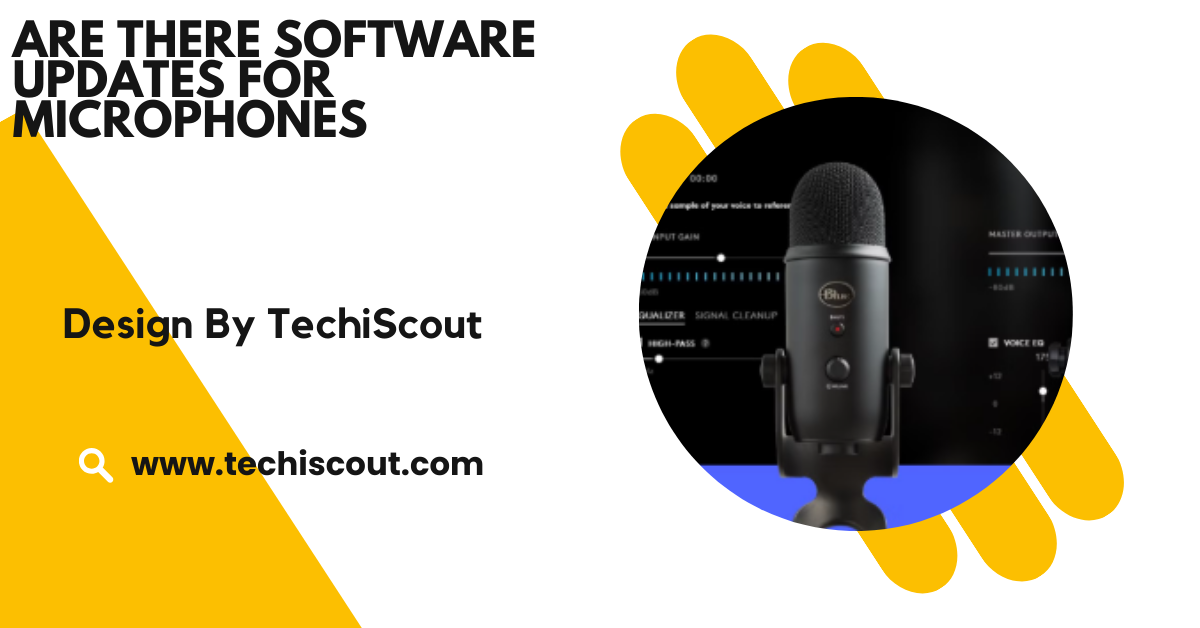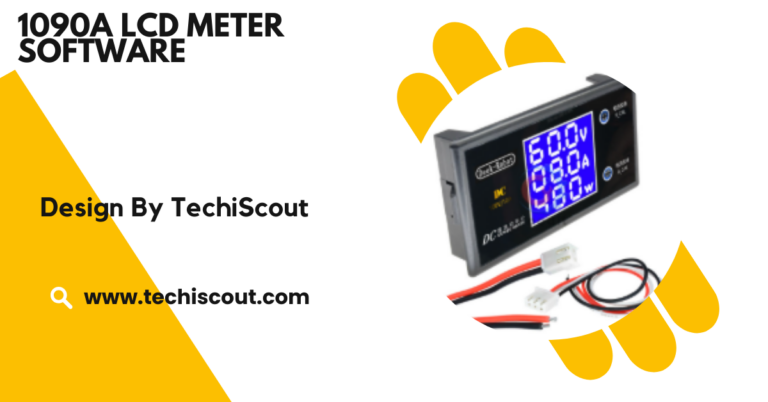Are There Software Updates For Microphones – Update Now!
Yes, microphones can receive software updates, particularly digital and USB microphones with built-in processors or companion apps.
This article explores how microphone software updates work, their importance, and how to manage them effectively.
Table of Contents
Understanding Microphone Software:

Modern microphones, especially USB and smart microphones, often feature integrated software or firmware. These microphones use onboard processors and digital-to-analog converters (DACs) to optimize sound quality. Software updates improve these features by:
- Enhancing audio quality.
- Fixing bugs.
- Adding new functionalities.
- Improving compatibility with operating systems and audio software.
Types of Microphone Software:
Firmware:
Firmware is the permanent software embedded in the microphone’s hardware. It controls essential functions like signal processing, noise cancellation, and gain adjustment. Updates to firmware are often delivered by manufacturers to optimize performance.
Driver Software:
Drivers are computer programs that allow the operating system to communicate with the microphone. Updated drivers ensure compatibility with the latest systems and prevent connectivity issues.
Companion Apps:
Many high-end microphones come with companion apps, enabling users to adjust settings like EQ (equalizer), presets, or reverb. These apps are periodically updated to enhance functionality.
Why Are Microphone Software Updates Important:
Updating microphone software is crucial for the following reasons:
Enhanced Performance:
Software updates can improve the overall sound quality by refining audio processing algorithms. This is especially important for professionals who demand crystal-clear recordings.
Compatibility:
As operating systems evolve, older drivers or firmware may become incompatible. Updates ensure seamless communication between your microphone and computer or other devices.
Bug Fixes:
No software is perfect, and microphones are no exception. Updates address glitches or bugs that users might encounter, ensuring smooth operation.
Security Improvements:
In rare cases, microphones integrated into smart devices can be vulnerable to cyber threats. Updates help address potential vulnerabilities and secure your data.
New Features:
Manufacturers occasionally introduce innovative features through updates, such as new audio filters, voice modulation options, or expanded app functionality.
Read More: Who Should Sign Off Software Design Document Example
Which Microphones Receive Software Updates:
Not all microphones are designed to receive updates. Generally, digital microphones with built-in processors or USB microphones with companion apps are the most likely candidates. Examples include:
- Professional USB Microphones:Brands like Blue Microphones (Yeti series) or Elgato often release updates for better performance and features.
- Smart Microphones:Devices like Rode Wireless GO or Shure MV7 offer companion apps and firmware updates for advanced audio control.
- Integrated Device Microphones:Microphones in webcams, smartphones, or gaming headsets often receive software updates through driver or system updates.
How to Check for Microphone Software Updates:

Follow these steps to determine whether your microphone needs an update:
Visit the Manufacturer’s Website:
Manufacturers often provide firmware and driver updates on their official support pages. Search for your microphone model to find available updates.
Use Companion Software:
If your microphone comes with a companion app (e.g., Blue Sherpa or ShurePlus MOTIV), the app will usually notify you about updates.
Check Your Device Manager (For Windows Users):
Access the Device Manager to check the driver version:
- Right-click on Start and select Device Manager.
- Find your microphone under “Audio Inputs and Outputs.”
- Right-click and choose Update Driver.
Check System Updates (For macOS Users):
macOS updates often include updated drivers for connected devices. Go to System Settings > Software Update to check for any relevant updates.
Automatic Update Notifications:
Some high-end microphones automatically notify users of firmware updates through their companion apps or LED indicators.
How to Update Microphone Software:
Once you’ve identified an available update, follow these steps to install it:
Download the Update:
Visit the manufacturer’s website or use the companion app to download the update file.
Connect Your Microphone:
Ensure your microphone is connected to your computer or device during the update process.
Install the Update:
Run the downloaded file or follow the instructions in the companion app. Avoid disconnecting the microphone during installation, as this may cause errors.
Restart Your Device:
After installation, restart your computer or device to ensure the updates are applied.
Common Issues with Microphone Software Updates:
While updates typically run smoothly, users may encounter the following issues:
Connection Problems:
Ensure the microphone is securely connected via USB or Bluetooth during updates. Faulty connections may interrupt the process.
Outdated Operating System:
Older operating systems may not support the latest microphone updates. Update your OS to the latest version before proceeding.
Firmware Update Failure:
In rare cases, firmware updates might fail due to power interruptions or incompatible software. Most manufacturers provide troubleshooting guides for such issues.
Software Compatibility:
Some updates may inadvertently cause compatibility issues with existing software. If this happens, check for patches or roll back to the previous firmware version.
Tips to Maintain Your Microphone’s Performance:
Updating software is only part of maintaining your microphone. Follow these additional tips for optimal performance:
- Regular Cleaning:Dust and debris can affect sound quality. Clean your microphone periodically with a soft cloth or compressed air.
- Proper Storage:Store your microphone in a dry, dust-free environment to prevent damage.
- Avoid Overloading the Mic:Avoid excessive sound levels that can distort or damage internal components.
- Use High-Quality Accessories:Pair your microphone with reliable accessories like shock mounts, pop filters, and high-quality cables.
- Stay Updated:Check for updates every few months to keep your microphone operating at its best.
FAQ’s:
1.Can all microphones receive software updates?
No, only digital or USB microphones with firmware or companion apps can receive updates, not analog microphones.
2.Why are microphone software updates important?
They enhance audio quality, fix bugs, ensure compatibility, and may introduce new features.
3.How can I check for microphone software updates?
Visit the manufacturer’s website, use companion apps, or check your device’s driver update options.
4.What should I do if a firmware update fails?
Restart the process, ensure a stable connection, and consult the manufacturer’s troubleshooting guide.
5.Are microphone software updates free?
Most updates are free, though premium features in companion apps may require additional payment.
Conclusion:
Software updates for microphones exist and play a vital role in ensuring optimal performance, compatibility, and security. While not all microphones can receive updates, digital and USB microphones with built-in processors or companion apps benefit significantly from them. By regularly checking for updates and maintaining your microphone properly, you can ensure a long lifespan and consistent audio quality.






